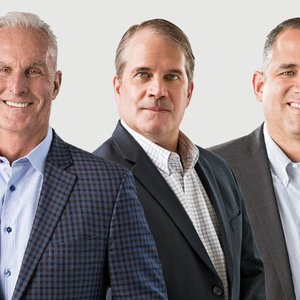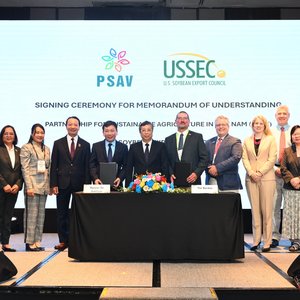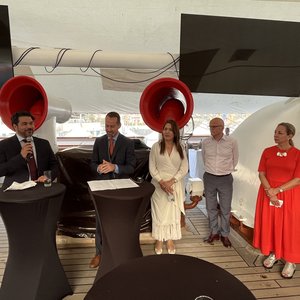In the last few years, the Norwegian salmon farming industry has become a net producer of marine protein. (Photo: Bård Gudim)
Over the past few years, the salmon farming industry has gone from being a major consumer of marine protein to becoming a net producer of it – a turnaround made possible by a deeper understanding of the nutritional requirements of salmon.
Norwegian Minister of Fisheries Elisabeth Aspaker is hoping to see the Norwegian aquaculture industry expand to five times its current size by 2050. Such ambitious growth would have to be fuelled by the development of feed ingredients that replace conventional, and increasingly scarce, fishmeal and fish oil.
“Feeds of the future” is one of the Research Council of Norway’s thematic priority areas for aquaculture research. At the HAVBRUK 2014 Conference, Scientist Trine Ytrestøyl of the Norwegian Institute of Food, Fisheries and Aquaculture Research (Nofima) documented that this feed revolution is already well underway.
A “sea change” in feeds
In 1990 the Norwegian salmon farming industry was using feed that was 90% based on marine ingredients. By 2012 that proportion had been reduced to roughly 32%. How? With ingredients from the plant kingdom. From 1990 to 2000 the proportion of plant ingredients in fish feeds tripled while protein from marine sources was halved. The use of vegetable oils has been increasing since 2000. In 2012 rapeseed oil made up 18.3% of fish feed, while the proportion of soybeans matched fishmeal as a protein source in feed. Advances such as these are making it possible to produce far more salmon from a limited supply of marine resources – while boosting the sustainability of aquaculture.
Fish-in/fish-out ratio (FIFO) is a calculation of how much capture fish is required for the fishmeal and fish oil used to produce one unit of farmed salmon. For example, a FIFO of 1 means that 1 kg of wild fish must be caught in order to produce 1 kg of farmed fish. Excluding the proportion of ingredients produced from fish trimmings , the FIFO for fish oil dropped from 7.5 to 1.25 in the period 2000?2013. Over the past two years the FIFO for fishmeal has been at 0.7.
“In the past few years the salmon farming industry has turned into a net producer of marine protein,” said Dr Ytrestøyl.
Defining requirements, finding alternatives
Modernizing feed composition has largely been a matter of substituting plant proteins and vegetable oils for much of the fishmeal and fish oil derived from wild-caught fish. This is a complete redesign of feeds, closely based on research on the nutritional requirements of production salmon. Researchers are quantifying precisely what the feed needs to contain – and knowing this allows them to search for alternative feed ingredients that can satisfy salmon’s requirements.
“When the proportion of fish oil in the feed is reduced, that fat needs to be replaced with other sources of fat such as vegetable oils or animal fat,” explains Bente Torstensen, Director of Research at the National Institute of Nutrition and Seafood Research (NIFES). “To ensure both good growth and fish health, one thing we must know is the salmon’s minimum requirements for the various nutrients, including vitamins and minerals.”
Doctoral research fellow Marta Bou Mira and post-doctoral researcher Marte Avranden Kjær, both of Nofima, are studying salmon’s requirements for and utilization of omega-3 fatty acids. In a long-term trial, Ms Bou Mira is documenting the development of salmon raised on different diets, from 40 grams until they reach 4?5 kg. The differences in fatty-acid composition are already apparent at 400 grams, particularly in the heart and brain. Dr Kjær’s work has revealed that the salmon’s process of converting omega-3 fatty acids is complex.
“The genes and gene copies are regulated differently, and gene expression shows rhythmic variations and can only be influenced up to a certain point,” says Dr Kjær. “So there are many factors that play a role in salmon’s maximal utilisation of the favourable omega-3 fatty acids.”
Safe food must be safeguarded
New fish feed ingredients may also introduce contaminants such as pesticides and drug residues from processed animal protein.
“Together with international research groups, NIFES is generating knowledge about the suitability of vegetable, animal and other alternative feed ingredients with regard to salmon’s tolerance thresholds for various contaminants and how much is carried over from the feed to the edible salmon cuts,” says Dr Torstensen. “This research is important for making sure that farmed salmon remains a safe and healthy food, even with substantially altered feed compositions.”










